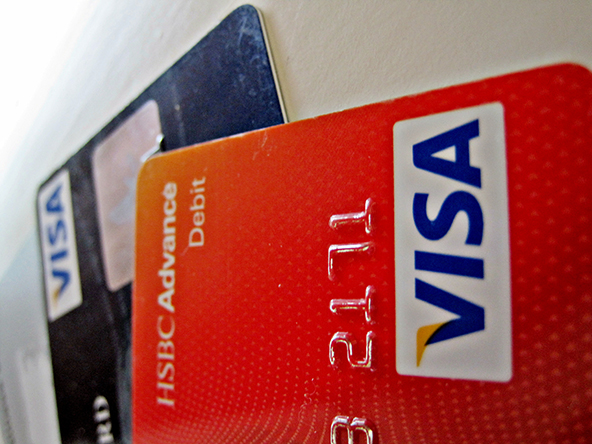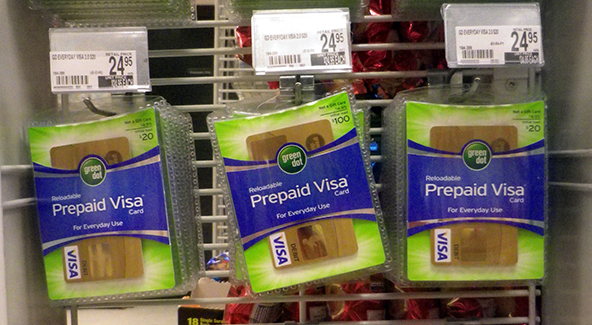The More You Use Your Debit Card, the Lower Your Credit Score

That is the conclusion of a recent study by Fumiko Hayashi and Joanna Stavins from the Federal Reserve Bank of Boston. The researchers say that they set out to verify the anecdotal negative relationship between the use of debit cards and credit scores and have indeed confirmed the validity of this common assumption.
Hayashi and Stavins then go on to investigate whether the negative relationship is the result of supply-side or demand-side effects, i.e. whether consumer access to credit cards, the cost of using them and the credit limits are influenced by the credit score or whether the differences in consumer payment preferences are associated with a lower credit score. The researchers find that the former (supply-side) factors are the ones playing the important role. Let’s take a closer look at the paper’s findings.
Credit or Debit?
Hayashi and Stavins have compiled a great deal of data to help them identify the consumer groups most likely to adopt each of the two most popular types of payment cards. I suspect that their conclusions will not come as a surprise to many of you. Consumers who prefer credit over debit tend to fall into at least one of the following categories:
- Are older.
- Have a college degree.
- Have a higher credit score.
Why do these consumers prefer credit cards and what makes this type of card less appealing to other types of consumer? Well, here is how Hayashi and Stavins have put it:
Convenience is a significant determinant of card adoption, and cost is significant in the debit card adoption, both relative to the cost of credit cards and relative to all other payment methods.
Or put another way, consumers with higher credit scores are free to choose the best one from a list of options, while those with lower scores are forced to select the least bad one available to them. And here is where we bump into the supply-side vs. demand-side issue.
Debit Is Not a Choice
The inescapable conclusion I get from the paper is that for most consumers a debit card is really only a second-best option, typically selected when the preferred one — credit cards — is unavailable or unattractive due to higher cost, or insufficient credit limit. As the authors put it:
No credit card issuers may have offered credit cards to consumers with a lower FICO score. Even if lower-FICO-score consumers actively chose not to adopt a credit card, their reasons could have been related to supply-side factors, such as higher cost or insufficient credit limit offered.
Hayashi and Stavins find a confirmation for the supply-side effects in the way rewards cards are perceived by consumers with higher and lower credit scores:
All respondents rate credit cards as more costly than debit cards (the difference is negative). Among credit card reward receivers, credit cards get progressively better (relatively less costly) as FICO score increases. In other words, lower-FICO people assess credit cards as more costly than higher-FICO people.
…
We find that consumers who receive rewards on their credit cards rate the relative cost of credit cards more highly (less costly) than consumers without rewards, but that the rating increases with FICO score for all consumers (Figure 2). We therefore find that there are cost differences related to the FICO score, and thus confirm that supply-side factors are important in generating differences in payment behavior associated with credit scores.
Lower credit limits provide an even better example, as they are a direct consequence of lower credit scores. Once you reach the limit of your credit line, you simply cannot use it until you’ve paid up at least a portion of the outstanding balance. Until you do that, you’ll be reliant on other payment methods, one of which could be your debit card. So this is a clear case of a supply-side constraint.
The Takeaway
The researchers are careful to repeatedly state that demand-side effects, such as aversion to debt, spending control and budget consideration, can also influence consumer tastes and preferences in a statistically significant way. And yet, they find that:
[E]ven when controlling for several variables that affect payment behavior, higher credit score indicates a higher probability of holding a credit card, and a lower probability of holding a debit card. Moreover, conditional on adoption of either credit or debit, cardholders with higher FICO scores were found to use credit cards for a higher share of their payments, and use debit cards less, controlling for several socio-demographic attributes.
The conclusion:
[W]e have tested various hypotheses related to the cause of the relationship between credit scores and payment behavior and have found support for supply-side factors related to credit constraints on consumers with low credit scores.
Again, this may not come as a surprise to many of you, myself certainly included, but Hayashi and Stavins provide solid data to back up our assumptions.
Image credit: Flickr / Images_of_Money.



Well, it makes sense that credit card users will have higher FICO scores because you need them to get a credit card in the first place. I guess the same logic can be applied to explain why debit card users have lower scores.
“Or put another way, consumers with higher credit scores are free to choose the best one from a list of options, while those with lower scores are forced to select the least bad one available to them.”
That says it all right there. People with low credit scores don’t really have options, they use whatever they can get their hands on.
Using debit cards is actually better than credit cards, because it protects us from going overboard with spending other people’s money. So I think that’s good news.
I think right now there are other more important factors that influence peoples’ decisions to use this type of card or that. Yes, credit scores are always part of it, but Americans right now are very careful with their credit cards and don’t want to overspend. This is what makes debit attractive.
Americans have pulled back from credit card use during the latest recession and are still not willing to start spending again. These people need to use some kind of card and at least some of them must have switched to debit, which may be part of the explanation of what’s going on.